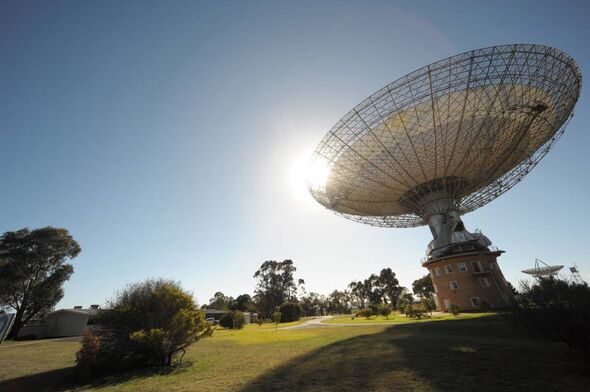Professor Simon Holland says he has seen evidence of extraterrestrial intelligence in the galaxy, and that it could be confirmed within weeks as two rival groups of astronomers race to publish

British academic Professor Simon Holland, who has extensive experience in collaborating with NASA on projects such as tracking Earth-threatening asteroids, is convinced he’s onto groundbreaking revelations.
Speaking to The Mirror, Holland revealed: “We have found a non-human extraterrestrial intelligence in our galaxy, and people don’t know about it.”
According to the professor, insiders from Mark Zuckerberg’s Breakthrough Listen project have tipped him off that there could be news breaking within a month potentially timed with the US election buzz, suggesting concrete evidence of alien life forms.
He suggests researchers associated with the Oxford-based endeavour may already hold compelling proof of alien signals intercepted by the Parkes telescope in Australia.
“They found the evidence of a non-human technological signature a few years ago, using the Parkes telescope in Australia,” claimed Holland, underlining that the study financed by tech moguls Zuckerberg and Yuri Milneris in an urgent chase for additional data to substantiate their unprecedented findings.
Simon warns that they are in danger of being outpaced to the finish line.

He revealed: “This is breaking news, as of yesterday, but the Chinese might be pipping them to the post, with their, FAST [Five-hundred-meter Aperture Spherical Telescope] programme. It’s the largest telescope in the world since Arecibo.”
The coordinates of the target object, known as BLC-1, are allegedly known to the Chinese and both teams are vying to be the first to make the highly prestigious announcement.
Five potential technosignature candidates were identified from a re-examination of SETI’s “Seti at Home” screensaver programme, which used the combined resources of the world’s PCs to sift through the vast amounts of data generated by radio telescopes. BLC-1, Simon says, is considered the most promising by far.
Regardless of what the source of BLC-1’s signals turns out to be, Simon emphasises, it’s unlike any known natural phenomenon. “It’s a single point source,” he says, and it’s not just noise.

Trending
SUBSCRIBE Invalid email
We use your sign-up to provide content in ways you’ve consented to and to improve our understanding of you. This may include adverts from us and 3rd parties based on our understanding. You can unsubscribe at any time. Read our Privacy Policy
“The signal, instead of being the giant buzz of everything in the universe that we hear through all radio telescopes, was a narrow electromagnetic spectrum.”
Astronomers have been thrilled by potential “alien” transmissions before when pulsars were first discovered they were catalogued as “LGM’ or “little green men” objects. And the 1977 “Wow!
“Signal has never been definitively identified. But, Simon believes, this time it could be the real thing.”
The scientists, understandably, are proceeding with extreme caution before making such a monumental announcement. However, Simon anticipates that it could be made by either the Breakthrough Listen team in Oxford or the Chinese team within the next month or so.
“It would it would be wonderful if it coincided with the first woman in the White House,” he jests.
Sourse: www.express.co.uk





